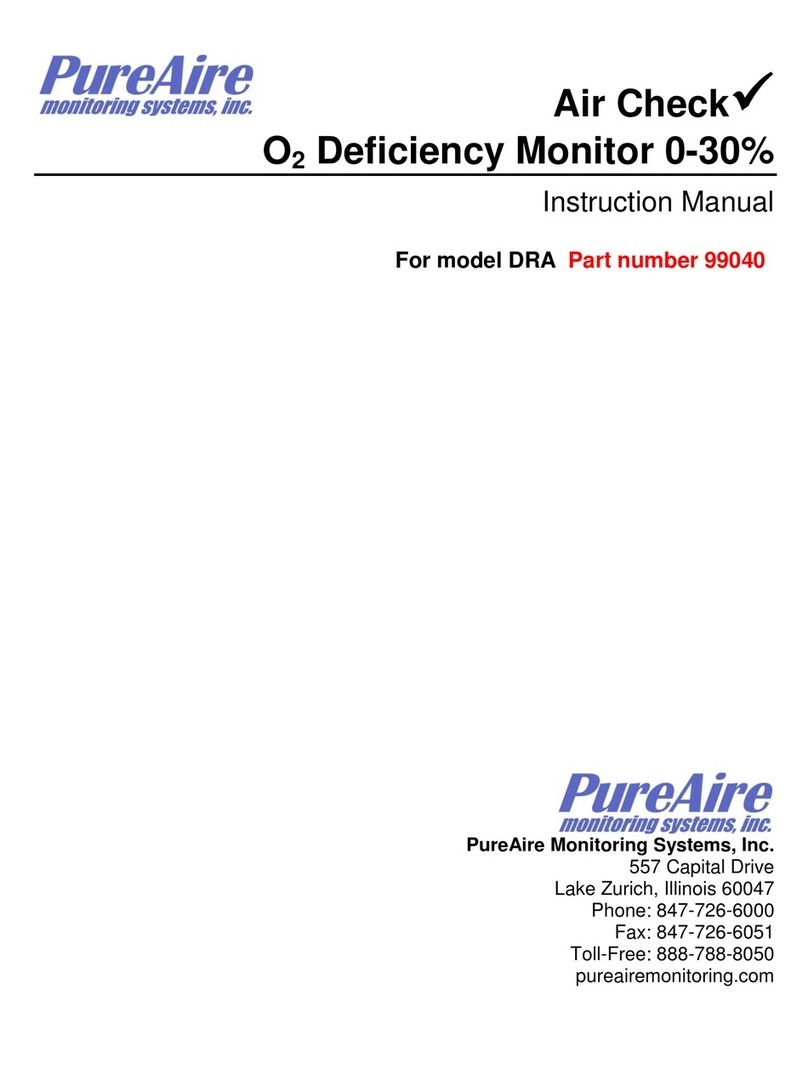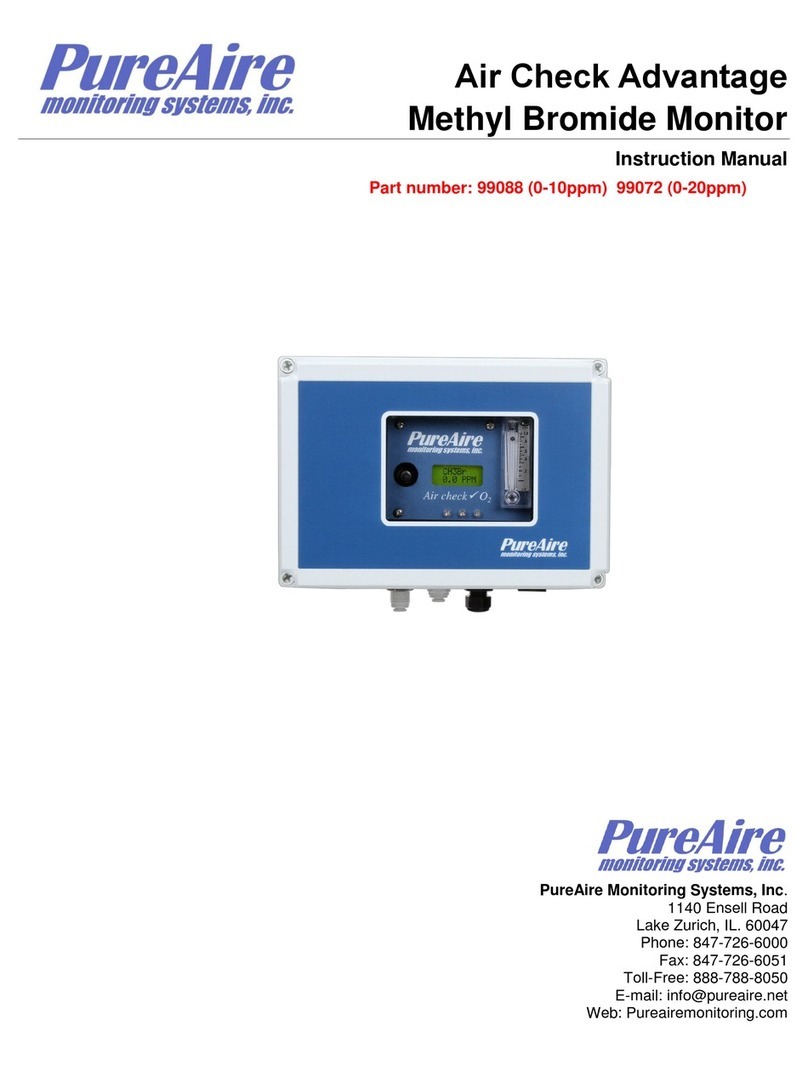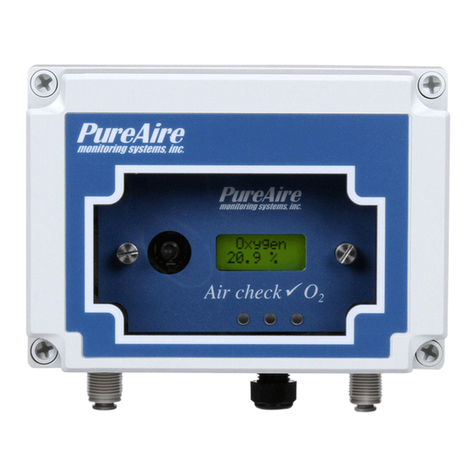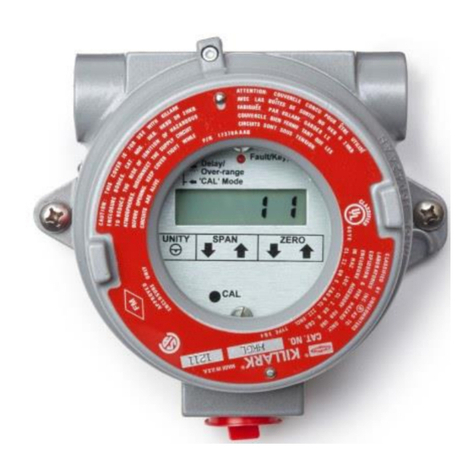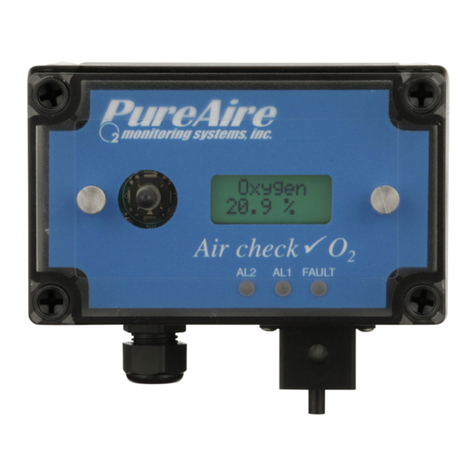
PureAire Monitoring Systems, Inc.
Table of Contents
1: Introduction .....................................................................................................................2
1.1 Key Features ........................................................................2
1.2 Component identification ....................................................3
2: Specifications...................................................................................................................7
2.1 Performance Specifications .................................................7
2.2 Gas Detection System..........................................................7
2.3 Signal Outputs .....................................................................7
2.4 Electrical Requirements.......................................................7
2.5 Physical Characteristics .......................................................7
2.6 System Default Factory Settings .........................................8
3: Installation .......................................................................................................................9
3.1 Site Requirements................................................................9
3.2 Mounting..............................................................................9
3.3 Wiring ................................................................................10
3.4 Initial Startup .....................................................................10
4: Normal Operation..........................................................................................................11
4.1 Signal Outputs ...................................................................11
4.2 Instrument Faults ...............................................................12
4.3 Routine Maintenance Schedule .........................................12
4.4 Loss of Power Indicator.....................................................12
4.5 Alarm Reset .......................................................................12
5: Air Check O2Monitor Programming ............................................................................13
5.1 Joystick Operation .............................................................13
5.2 Program Flowchart ............................................................14
5.3 Entering the Password .......................................................18
5.4 Changing the User Password .............................................19
5.5 Entering the Menus............................................................22
5.5.1 Set 4-20mA Loop .....................................................22
5.5.2 Set Formats ...............................................................24
5.5.3 Set Alarm Threshold Polarity ...................................26
5.5.4 Set Latching ..............................................................28
5.5.5 Resetting a Latching Alarm ......................................31
5.5.6 Set Alarm Delay .......................................................31
5.5.7 Set Zero Suppression ................................................31
5.5.8 Set Alarm Thresholds ...............................................32
5.5.9 Set Alarm Hysteresis ................................................34
5.5.10 Set Sensor Adjust....................................................35
5.5.11 Main Operation Mode.............................................36
6: Maintenance & Cell Verification ..................................................................................37
6.1 Sensor Verification ............................................................37
6.2 Sensor Verification Procedure...........................................38
7: Appendix .......................................................................................................................41





